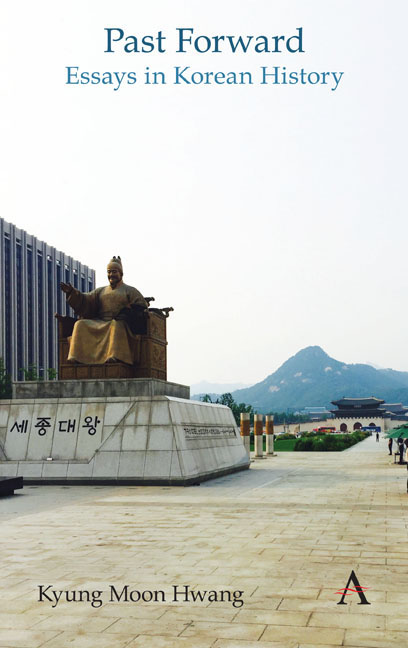Book contents
- Frontmatter
- Contents
- List of Figures
- Foreword
- Chronologies of Korean History
- Themes
- Acknowledgments
- Note on Romanization and Spelling
- Part I Circulating History
- 1 Recycling Names for Korea
- 2 Toppling Tyrants
- 3 Religion and Secularism
- 4 Commemorating the Comfort Women
- 5 May 16 and May 18
- 6 Tragedy and Farce
- 7 Generational Renewal
- Part II Durable Traditions
- Part III Ancient Remains
- Part IV Dynastic Depths
- Part V Modern Origins
- Part VI Challenges of Nationhood
- Part VII History Makers
- Part VIII External Presences
- Part IX Trials of Modernization
- Part X Gripped by the Past
- Index
7 - Generational Renewal
from Part I - Circulating History
- Frontmatter
- Contents
- List of Figures
- Foreword
- Chronologies of Korean History
- Themes
- Acknowledgments
- Note on Romanization and Spelling
- Part I Circulating History
- 1 Recycling Names for Korea
- 2 Toppling Tyrants
- 3 Religion and Secularism
- 4 Commemorating the Comfort Women
- 5 May 16 and May 18
- 6 Tragedy and Farce
- 7 Generational Renewal
- Part II Durable Traditions
- Part III Ancient Remains
- Part IV Dynastic Depths
- Part V Modern Origins
- Part VI Challenges of Nationhood
- Part VII History Makers
- Part VIII External Presences
- Part IX Trials of Modernization
- Part X Gripped by the Past
- Index
Summary
The mega rallies throughout the country in late 2016 reached a scale unmatched since the mass uprisings of three decades earlier, in 1987, that finally overthrew the South Korean dictatorship. As the democratic system instituted that year entered a period of great turmoil in 2016, and as developments around the world showed a resurgence of authoritarianism, we were reminded of the fragility of democracy, of the need for vigilance, and of the power of mass action against unjust rule.
I would argue, however, that the institutional and public response to President Park's abuse of her office, especially the candlelight vigils that eventually brought down her administration, also provided reassurances of the maturation and sturdiness of South Korea's democratic culture. South Koreans were justified in lamenting their incapacity, it seemed, to escape deeply ingrained habits of corruption, but they did not capitulate to history; rather, they viewed their history, especially the recent past, as a source of encouragement, inspiration, and determination to emerge from this trial with an even firmer democratic foundation.
The strongest support for this optimism came not necessarily from the scale of the demonstrations, but from the faces of the demonstrators themselves, or more precisely their ages: All generations, including children and teenagers, were represented in these peaceful gatherings. Parents brought their kids to the candlelight vigils to show them how to exercise their civic freedoms and responsibilities, and middle and high school students took it upon themselves to voice their concerns.
In this regard, especially striking were the comparisons to the mass protests of the 1960s to the 1980s, including the largest ones ever in 1987. The breakthrough to democracy that year drew on support from middle-aged, middleclass citizens, many of whom were former activists, but overwhelmingly the demonstrators continued to be mostly university students, along with laborers. High schoolers were frankly too busy trying to survive the college entrance exam system that consumed their lives. They had to wait until entering college, when the pressures for academic performance would be greatly reduced, to engage in politics. Indeed the sudden freedoms they experienced, once liberated from cramming, probably contributed to the energy of their extracurricular activities.
- Type
- Chapter
- Information
- Past ForwardEssays in Korean History, pp. 18 - 20Publisher: Anthem PressPrint publication year: 2019

